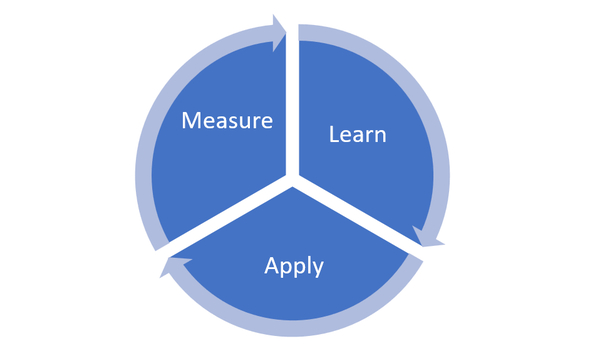THE WORLD’S #1 EXECUTIVE COACHING AND BUSINESS COACHING BLOG SINCE 2017.
A Guide to the Elements of a True Leadership Development Program
Published On: September 24, 2023 | Last updated on: March 12, 2025 | Author: John Mattone | Category: Blog, Intelligent Leadership
Leaders don’t spontaneously emerge, fully formed, from your pool of employees.
Leaders must learn new skills and apply them just like everyone else.
Indeed, some people show more promise as leaders—regardless of their official job title—but leadership development is long-term. Fortunately, most corporate leaders realize this and consider it a top priority.
Leadership development is a broad term. It means different things to the aspiring or first-time leader and the seasoned senior executive.
Generally speaking, leadership development at lower levels of leadership is more tactical and “nuts and bolts.” Senior-level leadership tends to be more strategic and geared toward developing and sustaining corporate culture.
Successful Leadership Development Program
All successful leadership development programs need four essential elements:
- Participants;
- instructors;
- high-quality content;
- Executive buy-in.
The program can only accomplish its goals if these elements are included.
The most effective programs orchestrate a virtuous cycle of measurement, learning, and application of skills. This cycle is not just a process, but a catalyst for continuous improvement and skill mastery.
The most effective development programs involve measurement, learning, and applying new skills.
The journey of an effective leadership development program commences with a thorough assessment of participants. This initial step is not just a formality but a strategic move to tailor the program to the specific needs of each participant.
That way, less time is wasted working on already strong skills, and more time can be spent addressing skills gaps. Once participants learn a skill, they should take the time to apply it (in different contexts, if possible).
People can only fully assimilate skills and learn to call on them when needed by applying and practicing skills.
Then, the measure-learn-apply cycle can begin again.
How Leadership Development Programs Benefit Businesses
Leadership development programs shouldn’t just be “feel-good” or “check off the boxes” programs. When done with forethought and genuine enthusiasm, they benefit business operations in multiple ways:
- They boost the organization’s financial performance
- They make it easier to attract and retain talent
- They improve the organizational culture
- They help the organization develop agility
Businesses with Leadership Development Programs are More Successful
Sixty-five percent of businesses that established a leadership development program demonstrate improved business results and a healthier bottom line.
One study found that businesses focusing on personnel development report significantly higher stock market returns than businesses that neglect leadership development.
Businesses that invest in leadership development programs see better results in their bottom line.
Internal vs. External Hiring
Companies typically find it more effective to develop internal candidates rather than bring new people in from the outside when it comes to attracting and retaining talent. This encourages top performers to stay, builds the company culture, and creates a better workplace. It makes it easier to attract candidates when they must be sourced externally.
Outstanding leadership development strengthens culture by keeping focus on the organizational vision. This helps create processes that work toward both short—and long-term objectives.
Finally, strong leadership development helps equip businesses to respond to market changes. Companies with strong leadership at all levels find it easier to respond to economic turbulence.
Leadership Development and the First-Level Leader
“First-level” leaders are transitioning from being individual contributors to being leaders. For example, this may mean becoming a team leader or managing a project. At this level, emerging leaders must acquire tactical skills to succeed in leadership. Skills necessary for first-level leaders include:
- Effective communication
- Motivating team members
- Defining goals and tasks
- Delegating
- Listening to and offering feedback
- Conflict resolution
- Empowering others to solve problems
In other words, first-level leaders are moving from getting the job done themselves to doing the job by facilitating other people’s contributions.
First-time leaders may manage a project or a small group to start.
First-level leaders are transitioning from using their skills or technical expertise directly to using both these skills and leadership skills to elicit great results from others. The type of leadership development they need is more tactical and hands-on than leadership at higher echelons.
Leadership Development and the Mid-Level Leader
At higher leadership levels, emerging mid-level leaders build upon their skills at eliciting outstanding performance to help those performers develop their skills in ways that are aligned with organizational goals. In other words, they ensure their team meets requirements and help team members grow and develop so that new leaders can emerge.
Leadership Programs for Mid-Level Leaders
Leadership programs for mid-level leaders will include different elements than those for first-level or senior-level leaders. Mid-level leaders are moving from strictly tactical leadership competencies to more strategic skills. They may, for example, be moving from project leadership to departmental leadership, where different skill sets are necessary.
Leadership growth skills for mid-level leaders include things like:
- Goal setting for teams rather than individuals
- Cross-functional collaboration skills
- Negotiation skills
- Higher-level delegation skills on the team rather than individual-level
As mid-level leaders, people develop a clearer sense of purpose within the overall organization. They usually develop a leadership philosophy that works for them, and that is in alignment with their core beliefs and values. Fewer of their actions are triggered by external sources (like supervisors), and internal decisions trigger more of their actions.
Leadership Development and the Senior-Level Leader
Senior-level leaders must operate more strategically and are often responsible for strengthening corporate culture.
At the senior or executive leadership level, the focus shifts from leading individuals and teams to leading the organizational culture’s development and maintenance. Executive-level leaders lead other leaders, in other words. Senior leaders may sometimes have to use tactical leadership skills like delegation or conflict resolution, but they must increasingly rely on strategic skills, such as:
- Organizational strategy development
- Communication of the organizational vision
- Creating a corporate culture that supports organizational vision
- Ensuring conditions are right for others’ growth and development
- Shaping organizational culture to support outstanding performance
Leadership Programs for Senior-Level Leaders
The right leadership program for first-time leaders would probably not serve the needs of seasoned executives and vice versa. Even in companies with relatively flat organizational structures, leaders will have different experience levels. Therefore, leadership development programs must be designed with the participants’ specific skill levels and needs.
The following table summarizes the basics of what is needed in leadership development at different leadership levels.
| Leadership Level | Skills vs. Influence | Tactics vs. Strategy |
| First-Level Leader | Skills are dominant | Tactics most important |
| Mid-Level Leader | Skills-influence mix | Tactics-strategy mix |
| Senior-Level Leader | Influence is dominant | Strategy most important |
Individual Programs vs. Group Programs
Group leadership development programs are more affordable but may not be easy to customize to organizational needs.
Should leadership development programs be implemented on an individual or group level? The answer will depend on several factors, including the size of the leadership “class,” specific leadership needs, and the budget for training.
Individual training would be ideal, but few organizations can allocate the time or money to support this type of training—particularly if multiple individuals qualify for future senior leadership positions. Group training makes sense for many businesses, but programs must be chosen carefully to ensure they address noted skills gaps at the right learning level for participants.
The following table summarizes the differences between individual and group leadership development programs and their advantages and disadvantages.
| Individual Leadership Development Programs | Group Leadership Development Programs |
| Participants get the undivided attention | Companies can orient a group of leaders toward common goals |
| Addressing specific skills is easier | Generally easier to plan |
| Programs can be “custom-tailored” | More cost-effective |
| Extensive planning is required if multiple individuals need training | Easier to develop a coherent leadership strategy across the organization |
| Tends to be expensive | May not adequately address some participants’ skills gaps |
| Potential exists for lack of cultural continuity if training is too highly individualized | May not be efficient in terms of time invested by the company |
Key Leadership Skills a Development Program Should Support
Some leadership skills are so fundamental that they can make or break leadership effectiveness at any level. A Leadership development program should offer lessons that support and strengthen self-awareness, lifelong learning, influence, and communication.
A leadership program should strengthen fundamental leadership competencies.
The Need for Personal Growth and Lifelong Learning
As I have said many times, self-awareness is one of the most important leadership qualities because it underlies every action of a true leader. Self-awareness begins with self-knowledge and is closely related to emotional intelligence. It allows us to evaluate situations, “read” the room, understand our emotions, and behave proactively rather than reactively.
Lifelong learning is necessary for everyone and leaders in particular. We live in a time of rapid change, and the markets and technologies we count on today can be superseded at any time. The leader who stops learning is a leader nearing the end of their effectiveness.
Power or Influence
Influence is similar to authority. It comes primarily from setting a great example. A leader’s influence can shape character, behavior, and attitudes for good or ill. Every leader must understand their influence on others and the surprising amount of responsibility that goes along with it.
Without communication, it’s impossible to lead. When the only difference between two leaders is communication ability, the one who can communicate well is, by definition, the better leader.
Communication from leaders takes many forms, and leaders who develop their communication skills and strive to continually improve them can count on becoming a better leader.
Future leaders must acquire the necessary skills to drive the business forward. To communicate effectively, it’s not enough to organize a team-building event twice a year where a team irons out specific issues that arise in interpersonal dynamics.
A deep introspection into the leader’s inner core is necessary. Critical thinking, decision-making, strategic thinking, communication skills, and other outer core competencies will improve only after this process.
How Participants Can Get the Most from a Leadership Program
Excellent time management helps leadership development program participants prepare and get the most from their program.
Whether you’re a participant in a leadership development program or are responsible for developing such programs, it’s important to know how people can get the most from them. Participants who will gain the most from leadership development efforts are those who:
- Manage their time well. Maintaining a calendar with reminders and time blocked out for course attendance, review, other work, home life, and R&R can help ensure that no area of life is shortchanged.
- Use learning best practices. People have different learning styles, and most know what’s best for them. Having the right tools, focusing during learning sessions, reviewing, and taking breaks can help learning “stick” better.
- Use available resources. Learners who take advantage of resources like online videos, podcasts, or written materials can shore up areas where they need more information or practice, helping close skills gaps more effectively.
- Ask for help. Everyone occasionally needs help, and there is no shame in asking for clarification or other questions. Asking questions helps ensure you won’t miss key concepts and keeps you engaged in learning.
- Successful learners attend learning sessions rested and ready to learn.
- Challenge themselves. When learners find a particularly interesting topic or aspect of a lesson, they may use their time to dig deeper and satisfy their need to learn more.
The Role of Coaching in Leadership Development
Coaching enhances leadership development at every leadership level.
Coaching can turn a good leadership development program into an exemplary one. Coaches work individually with people to develop strengths and overcome weaknesses and to practice skills so that they become natural and fluid. Sure, you could reasonably replicate your grandmother’s recipe for blackberry pie, but you’ll get even better results if she’s there with you, coaching you through every step.
Investing in Leadership Coaching
Leadership coaching may or may not be part of a pre-packaged leadership development program. It’s worth asking about.
Programs that provide at least some one-on-one coaching in addition to learning and skills development help participants lock down skills, improve knowledge retention, and have an easier time putting new skills to work in everyday life.
Many companies invest in individual leadership coaching for their senior-level executives because they have seen the results that outstanding coaching can produce.
Unfortunately, extended one-on-one coaching can be too expensive for many companies to add to their talent development programs. Regardless, program developers must understand the importance of participants practicing new skills and build practice sessions into programs.
Companies invest in leadership coaching for the same reason they invest in leadership development: because it gets measurable results.
If coaching isn’t in the budget, particularly for first-time or mid-level leaders, helping these emerging leaders find capable and willing mentors can reinforce learning and put it all into context.
Conclusion
Leadership development pays off over the short and long term.
Organizations that don’t invest in leadership development leave their future to chance. Even if today’s leadership “bench” is young and effective, it’s impossible to know how it will be in two or five years.
An organized approach to developing leaders and any kind of successful learning initiative helps companies ensure a deeper bench and helps ensure that when leadership positions open up, the right person is ready and willing to step up and take on the challenge.
No single leadership development program is right for every organization. Organizational size and structure, the particular industry, and organizational goals all influence what “leadership” means.
However, investing in future potential leaders’ personal and professional growth is an investment with demonstrable ROI.
It strengthens leadership capability and company culture and helps ensure that individual and team goals stay aligned with organizational goals.
The best leadership development begins with identifying front-line employees who demonstrate leadership within their roles and who show promise for taking on bigger responsibilities.
The sooner you identify potential leaders, learn of their willingness, and assist the willing with continuous learning, the better prepared you will be for a bright and promising future.
Glossary of Terms
Communication – effectively sharing or exchanging information, whether through speech, writing, video, or some other medium
First-level leader – a leader on the first rung of the leadership ladder. Someone transitioning from being a front-line producer to a leader of individuals.
Influence – the ability to affect others’ character, behavior, development, actions, or attitudes
Leadership coaching – a one-on-one professional relationship in which a coach works with a client to strengthen strengths, address shortcomings, and generally fulfill leadership potential
Leadership development program – an educational program designed to help new leaders gain skills, and more experienced leaders maintain and improve skills in preparation for taking on greater responsibilities.
Lifelong learning – a desire and willingness to continue learning new things, regardless of educational status, job title, age, or general level of experience or accomplishments
Measure-learn-apply – a virtuous educational cycle involving measuring competency, learning a skill, applying and assimilating the skill, and then starting the cycle over at a higher level
Mid-level leader – a leader who is moving from leading individuals or projects to leading teams, departments, or other organizational subsets
Self-awareness – the ability to monitor and manage one’s thoughts, emotions, and attitudes and behave appropriately in a given context
Senior-level leader – a leader at the top levels of leadership. Senior leaders operate more strategically and are often relied upon to strengthen and maintain organizational culture and define the organization’s place in the community and the industry.












